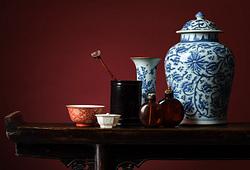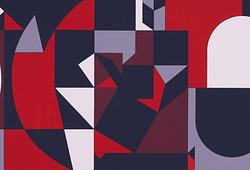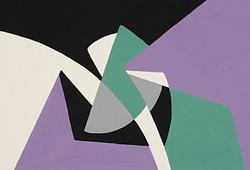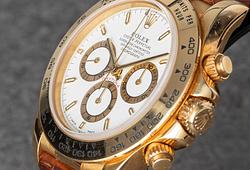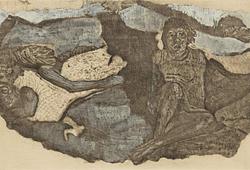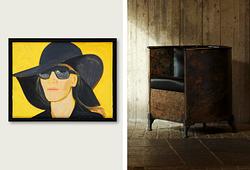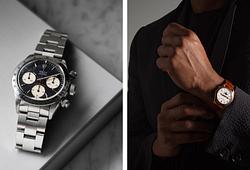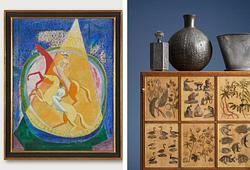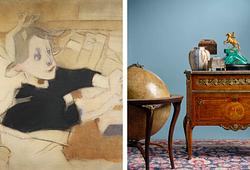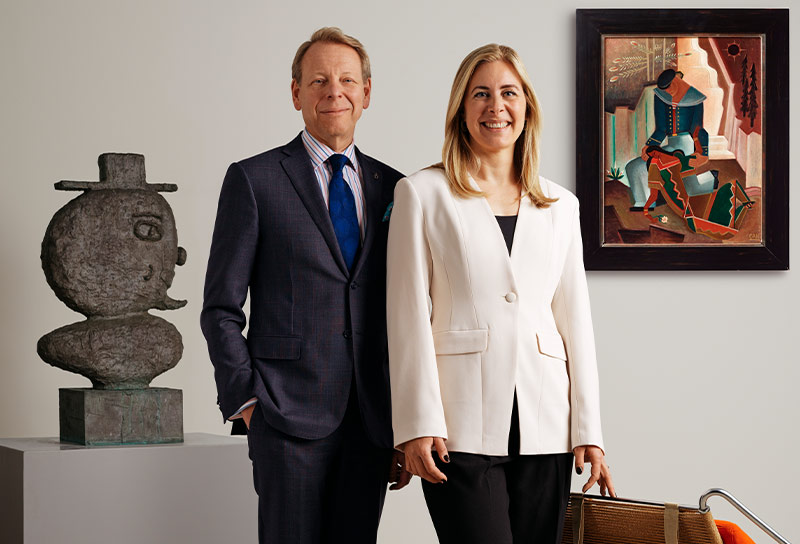Made in Sweden: A visit in Villa Prenker
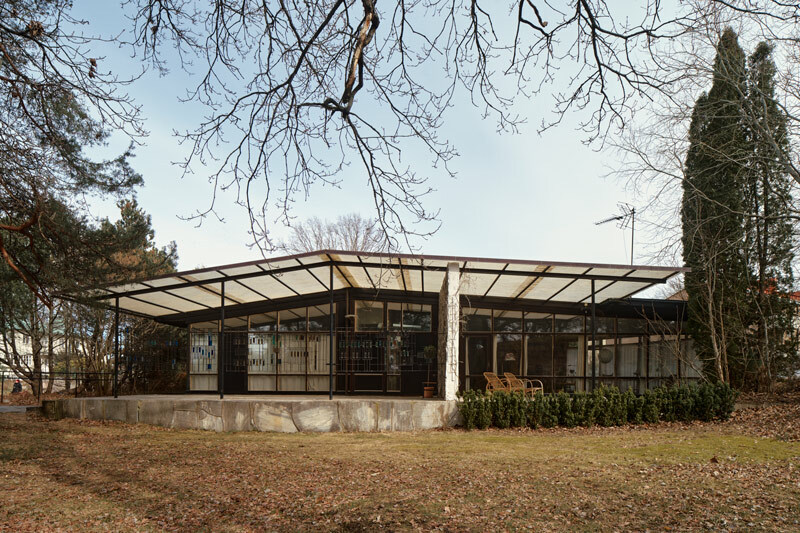
VILLA PRENKER
TORBJÖRN LENSKOG COLLECTION
Photography Fredric Boukari Text Ove Pihl
Torbjörn Lenskog was one of Sweden’s most skilled. As a graphic designer, a typographer, an Art Director, and an Advertising Agency creator, all this was when the quality of graphic design and advertising communication was at its peak in Sweden.
As a collector of important cultural artefacts, he will forever be celebrated. We were classmates in 1957 at the Beckman School of Design, as it is now called. Even then, Torbjörn’s talent was evident. We followed each other in parallel careers for several decades. Torbjörn Lenskog went his own way and became celebrated with numerous awards for his elegant typography and graphic design.
In the mid-70s, he successfully started the advertising agency Arbman & Lenskog. Now his great interest in the collection of cultural objects began in earnest.
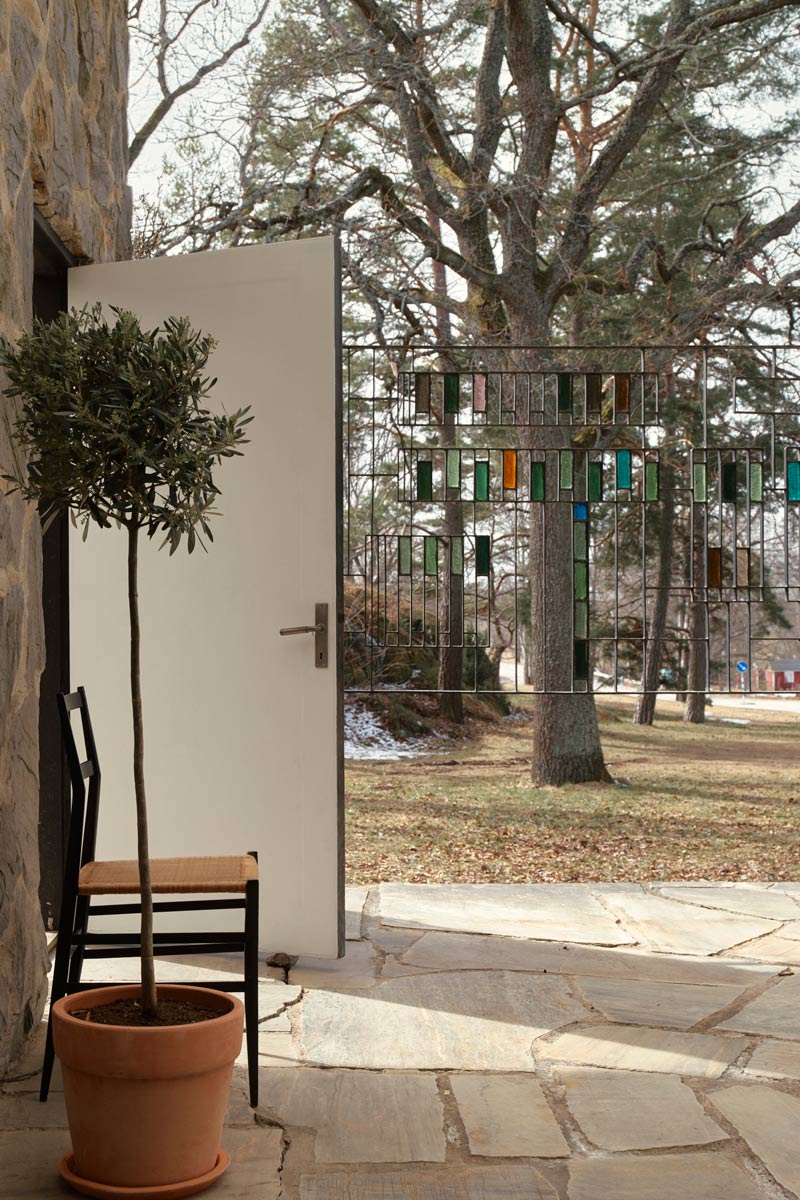
A portrait of Torbjörn Lenskog in his home in Kungsör, photographed by Åke E:son Lindman.
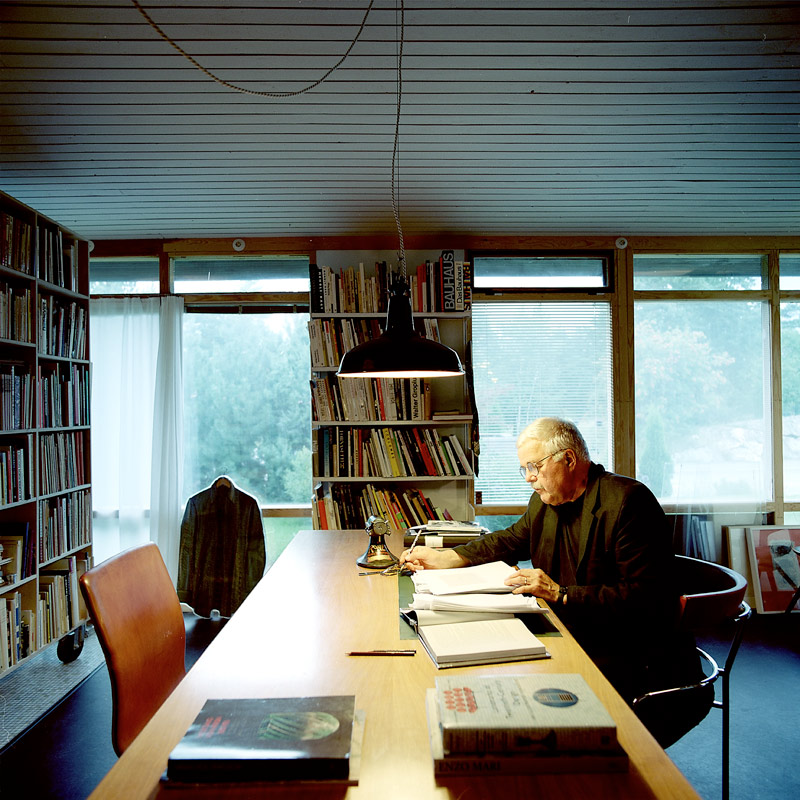
For many years, Torbjörn managed to create one of the largest collections of Linneaus literature, even by international standards. That collection eventually ended up in Japan, and Torbjörn got the resources to keep collecting.
Now, Torbjörn started collecting everything that the rest of us didn't see. The perfectly designed household items from the 50s and 60s. Kitchen appliances, radios, gramophones, coffee pots, telephones, all that stuff that was around us that we didn't see. In the end, Torbjörn had to rent a large warehouse to have room for everything. It became a permanent exhibition in Formens Hus and lots of international press.
The next project was a large and significant collection of old, functionally designed tools like those that might have been thrown in the corner of the forge in the barn or on the workshop floor. They were large exhibitions and a wonderfully beautiful catalogue.
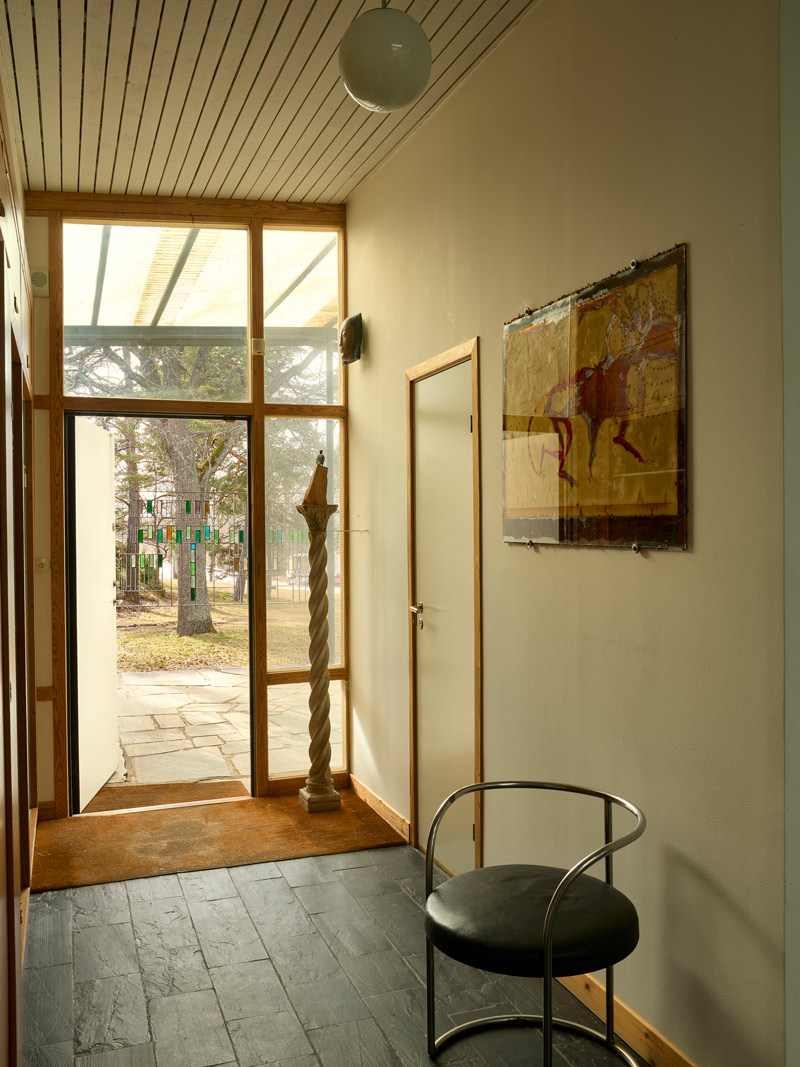

Torbjörn Lenskog’s world of ideas was unique. He went on to create a large collection of military objects from the First and Second World Wars. But not of the thing that killed. No Torbjörn was looking for everything else. The water bottles. the food can, the first aid kit, the comb, the soap, and everything else that the soldiers had to carry with them. It was a well-received travelling exhibition that began at the Armémuseum in Stockholm.
Torbjörn Lenskog did not elbow himself to the top. He was easygoing, friendly, and full of humour. We all remember Torbjörn's joy of storytelling which often began in reality but which ended roughly like a cock-and-bull-story by Fritjof Nilsson "Piraten". With Torbjörn Lenskog's passing, we lost a unique personality.
Text Ove Pihl
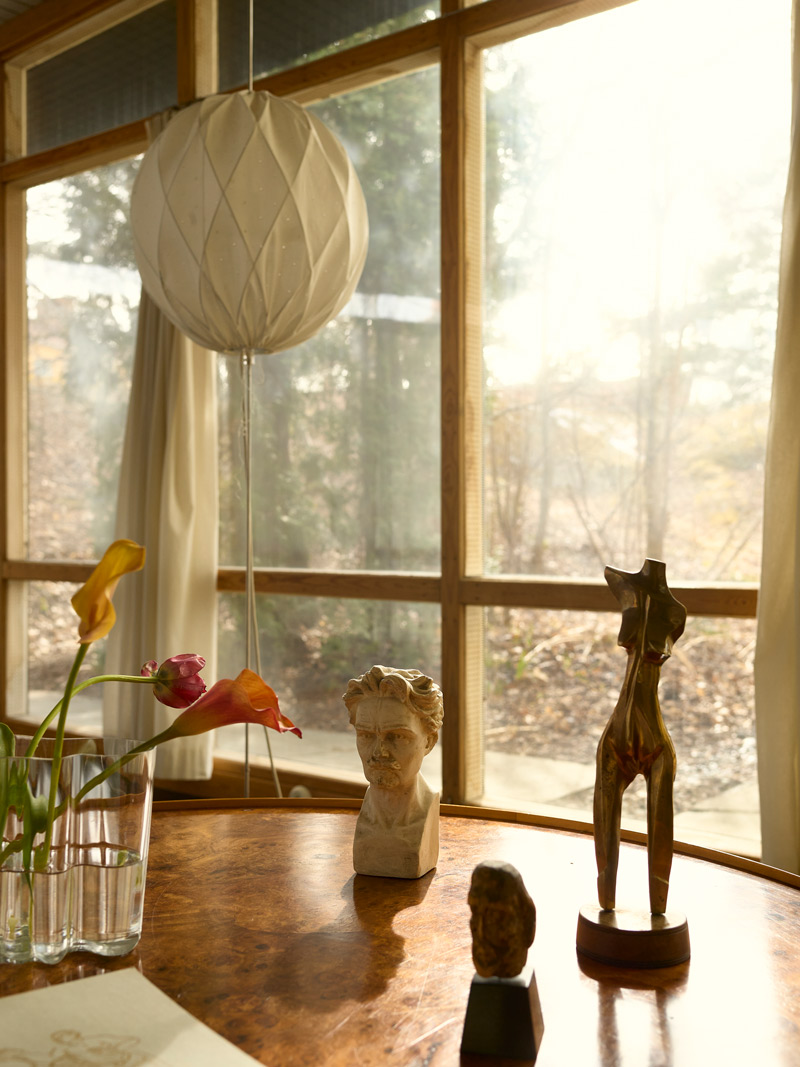
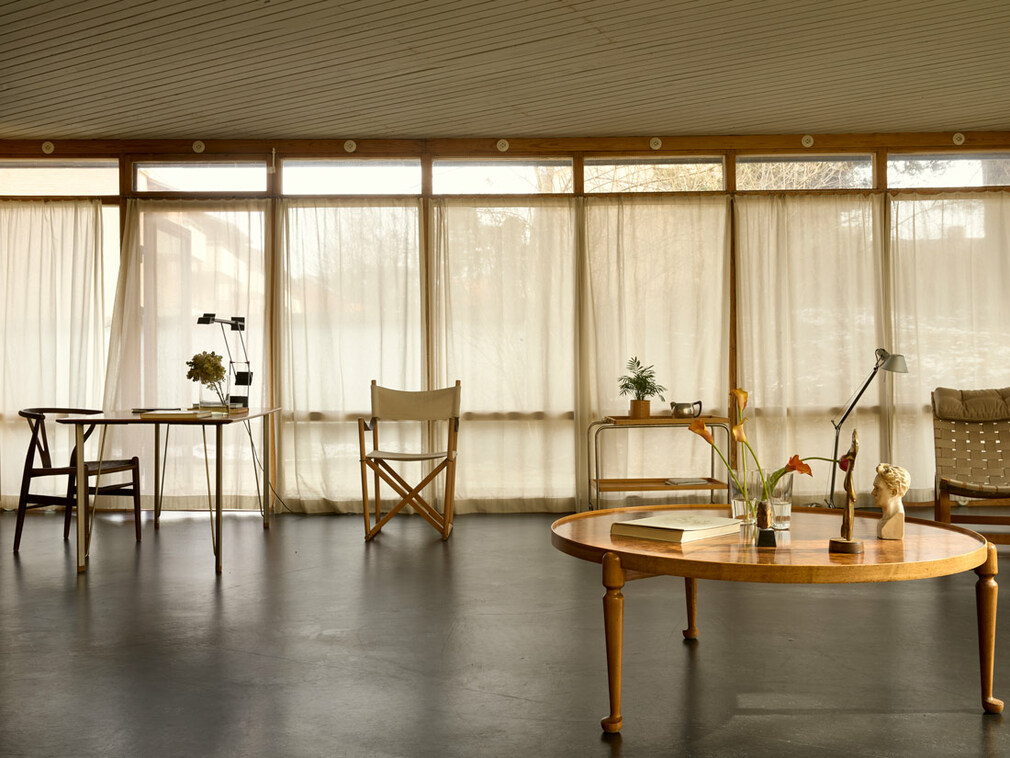
VILLA PRENKER
Bruno Mathsson’s villa in Kungsör was commissioned by the office furniture manufacturer Helge Prenker, who ran the furniture company Kingsor design. At the beginning of the 1950s, Prenker needed a new showroom and residence and went with Bruno Mathsson as his choice of architect. Mathsson, after a series of research trips to the USA, had a few years earlier begun to design and construct buildings inspired by the American ‘Case Study Houses’ that he had seen over there.
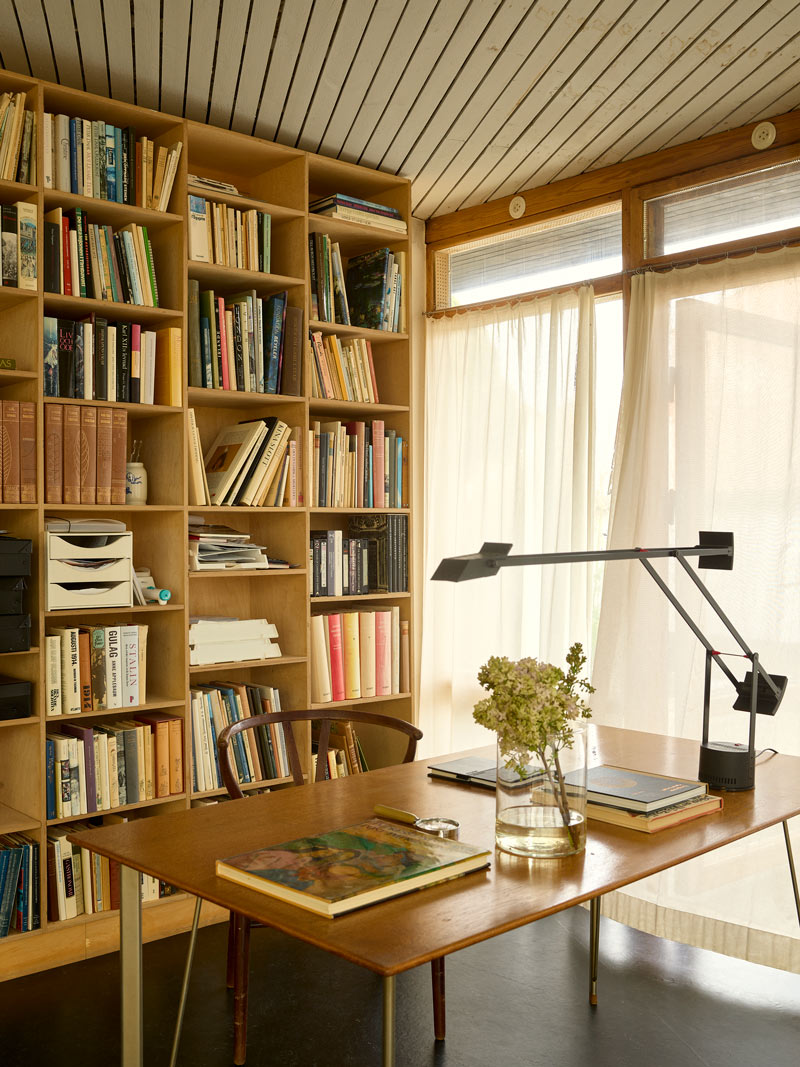
”
This was a type of modernist post-war architecture that internationally has been connected to names such as Richard Neutra and Pierre Koening, as well as the Swedish designer and architect Greta Magnusson Grossman.

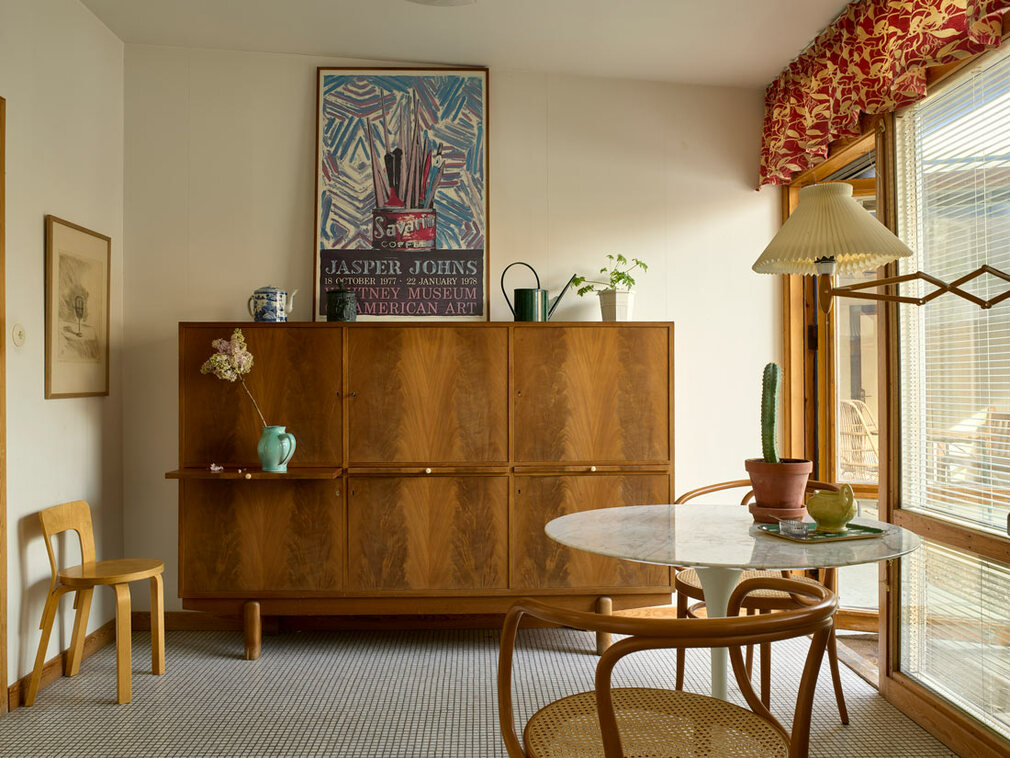
This was a type of modernist post-war architecture that internationally has been connected to names such as Richard Neutra and Pierre Koening, as well as the Swedish designer and architect Greta Magnusson Grossman. In Sweden, Mathsson had to adapt the style with its floor-to-ceiling glass facades to function in a Nordic climate. The wall sections were equipped with so-called ‘Bruno Panes’ – insulated glass with multiple panes filled with nitrogen. Helge Prenker had his combined villa and showroom constructed according to this system. The building was given a seventeen-metre long glass section with offices and a showroom facing Kungsgatan. Concealed behind the public and office areas was the residence. It has been said that its shape was inspired by the Swedish fighter plane ‘Draken’, which was brand new at the time, and from above, the house indeed resembles the wing of an aeroplane. The exterior of Villa Prenker consists almost entirely of sections of windows, which was possible due to the use of Bruno Mathsson’s innovative underfloor heating system inside. Villa Prenker was finished in 1953. In the 1990s, the house was put on the market. Torbjörn and Ulla Lenskog, great admirers of Mathsson’s architecture, purchased the house and moved from Stockholm to Kungsör. The house became the perfect fit for Torbjörn’s many collections, including of Mathsson designs. The family continued to live in Villa Prenker up until Torbjörn’s recent passing.
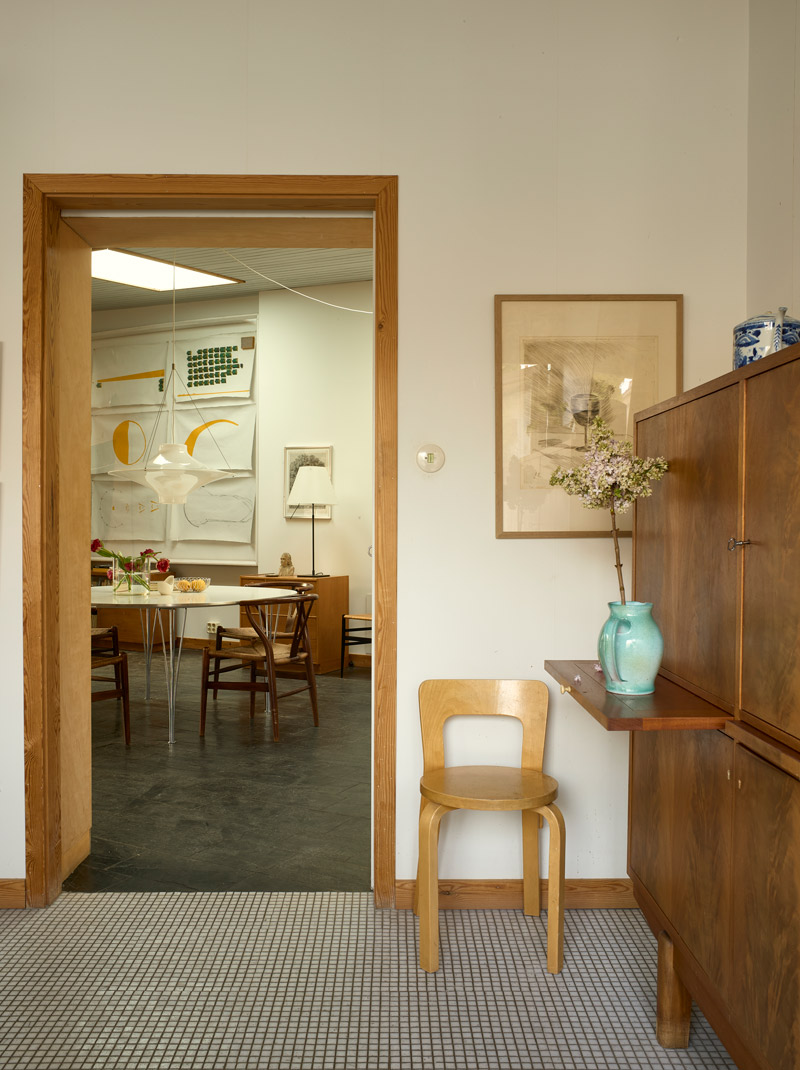
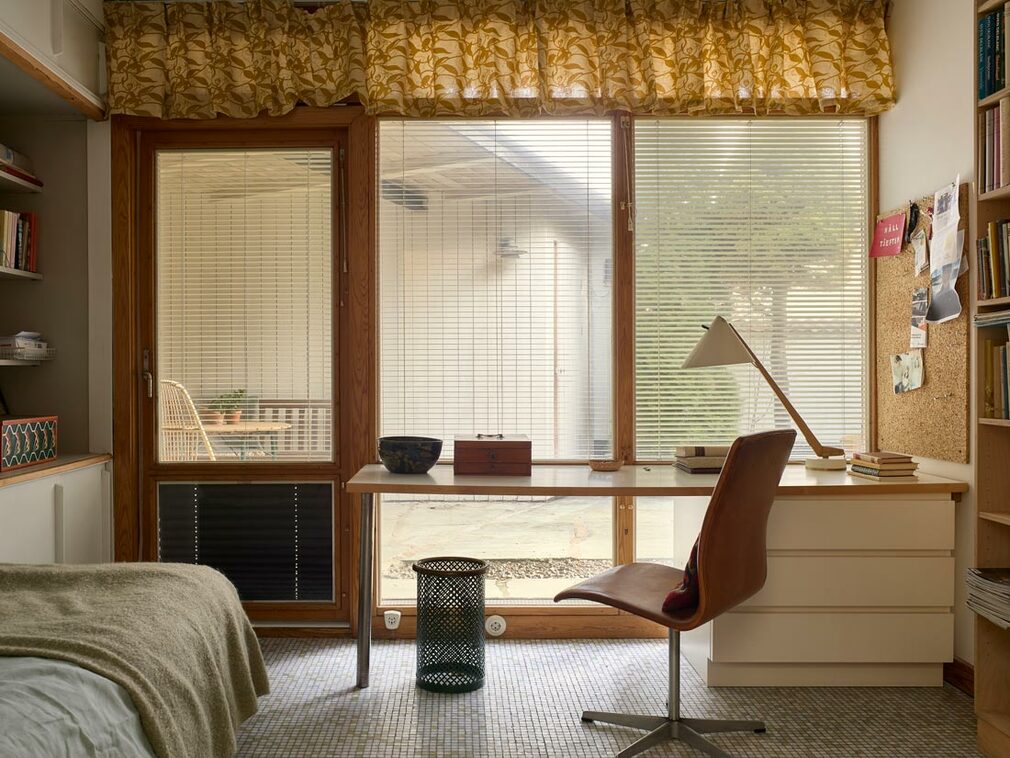
Several of Villa Prenker’s interior is featured in this essay and are now available for bidding here
Bid on the objects
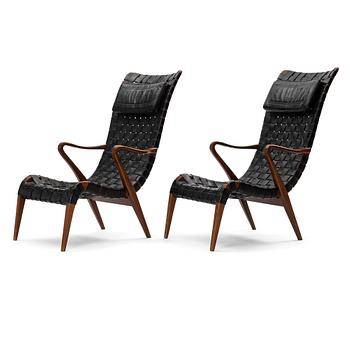
Vasarahinta
115 000 SEK
Lähtöhinta
25 000 - 30 000 SEK

Vasarahinta
10 000 SEK
Lähtöhinta
5 000 - 6 000 SEK

Vasarahinta
5 000 SEK
Lähtöhinta
6 000 - 8 000 SEK

Vasarahinta
12 000 SEK
Lähtöhinta
4 000 - 5 000 SEK

Vasarahinta
1 200 SEK
Lähtöhinta
1 500 - 2 000 SEK

Vasarahinta
11 000 SEK
Lähtöhinta
3 000 - 4 000 SEK

Vasarahinta
13 000 SEK
Lähtöhinta
10 000 - 12 000 SEK

Vasarahinta
42 000 SEK
Lähtöhinta
30 000 - 35 000 SEK

Vasarahinta
11 000 SEK
Lähtöhinta
12 000 - 15 000 SEK

Vasarahinta
6 000 SEK
Lähtöhinta
4 000 - 5 000 SEK

Vasarahinta
14 000 SEK
Lähtöhinta
8 000 - 10 000 SEK

Vasarahinta
16 000 SEK
Lähtöhinta
6 000 - 8 000 SEK

Vasarahinta
4 800 SEK
Lähtöhinta
6 000 - 8 000 SEK

Vasarahinta
2 000 SEK
Lähtöhinta
3 000 - 4 000 SEK

Vasarahinta
9 000 SEK
Lähtöhinta
8 000 - 10 000 SEK

Vasarahinta
3 000 SEK
Lähtöhinta
3 000 - 4 000 SEK

Vasarahinta
1 400 SEK
Lähtöhinta
1 000 - 1 500 SEK

Vasarahinta
8 000 SEK
Lähtöhinta
3 000 - 4 000 SEK

Vasarahinta
10 000 SEK
Lähtöhinta
12 000 - 15 000 SEK

Vasarahinta
11 000 SEK
Lähtöhinta
3 000 - 4 000 SEK

Vasarahinta
6 500 SEK
Lähtöhinta
3 000 - 4 000 SEK

Vasarahinta
3 500 SEK
Lähtöhinta
1 500 - 2 000 SEK

Vasarahinta
1 800 SEK
Lähtöhinta
2 500 - 3 000 SEK

Vasarahinta
10 000 SEK
Lähtöhinta
4 000 - 6 000 SEK

Vasarahinta
11 000 SEK
Lähtöhinta
8 000 - 10 000 SEK

Vasarahinta
2 400 SEK
Lähtöhinta
3 000 - 4 000 SEK

Vasarahinta
Ei myyty
Lähtöhinta
2 500 - 3 000 SEK

Vasarahinta
8 500 SEK
Lähtöhinta
10 000 - 12 000 SEK

Vasarahinta
1 200 SEK
Lähtöhinta
2 500 - 3 000 SEK

Vasarahinta
Ei myyty
Lähtöhinta
1 000 - 2 000 SEK

Vasarahinta
400 SEK
Lähtöhinta
1 000 - 1 500 SEK

Vasarahinta
500 SEK
Lähtöhinta
1 500 - 2 000 SEK

Vasarahinta
1 200 SEK
Lähtöhinta
1 000 - 1 500 SEK

Vasarahinta
5 000 SEK
Lähtöhinta
2 000 - 3 000 SEK

Vasarahinta
Ei myyty
Lähtöhinta
4 000 - 5 000 SEK

Vasarahinta
3 000 SEK
Lähtöhinta
3 000 - 4 000 SEK

Vasarahinta
Ei myyty
Lähtöhinta
3 500 - 4 000 SEK

Vasarahinta
15 000 SEK
Lähtöhinta
15 000 - 20 000 SEK

Vasarahinta
6 500 SEK
Lähtöhinta
2 000 - 3 000 SEK

Vasarahinta
2 400 SEK
Lähtöhinta
1 000 - 1 500 SEK

Vasarahinta
4 000 SEK
Lähtöhinta
2 500 - 3 000 SEK

Vasarahinta
4 000 SEK
Lähtöhinta
4 000 - 6 000 SEK

Vasarahinta
16 000 SEK
Lähtöhinta
10 000 - 12 000 SEK

Vasarahinta
4 000 SEK
Lähtöhinta
2 000 - 2 500 SEK

Vasarahinta
2 000 SEK
Lähtöhinta
1 000 - 1 500 SEK

Vasarahinta
Ei myyty
Lähtöhinta
5 000 - 6 000 SEK

Vasarahinta
400 SEK
Lähtöhinta
1 500 - 2 000 SEK

Vasarahinta
Ei myyty
Lähtöhinta
2 000 - 2 500 SEK

Vasarahinta
1 000 SEK
Lähtöhinta
1 500 - 2 000 SEK

Vasarahinta
3 000 SEK
Lähtöhinta
1 000 - 1 500 SEK

Vasarahinta
500 SEK
Lähtöhinta
1 000 - 2 000 SEK

Vasarahinta
Ei myyty
Lähtöhinta
2 000 - 2 500 SEK

Vasarahinta
1 200 SEK
Lähtöhinta
1 000 - 2 000 SEK

Vasarahinta
2 000 SEK
Lähtöhinta
3 000 - 4 000 SEK

Vasarahinta
3 000 SEK
Lähtöhinta
3 000 - 4 000 SEK

Vasarahinta
1 500 SEK
Lähtöhinta
2 500 - 3 000 SEK

Vasarahinta
Ei myyty
Lähtöhinta
1 000 - 2 000 SEK

Vasarahinta
1 000 SEK
Lähtöhinta
1 000 - 1 500 SEK





